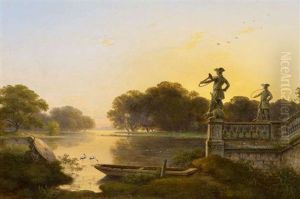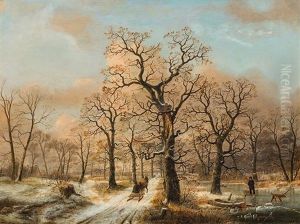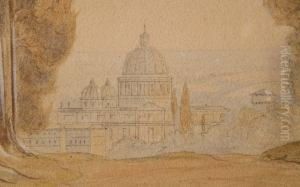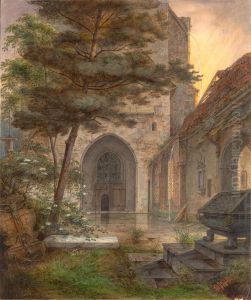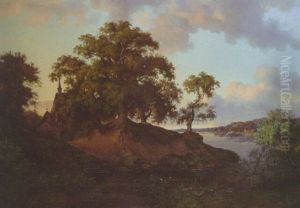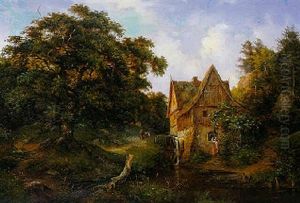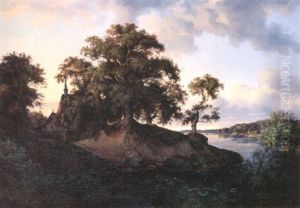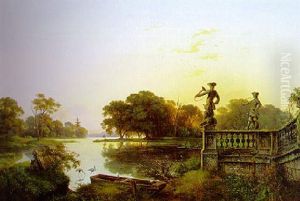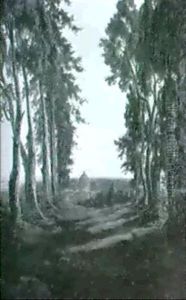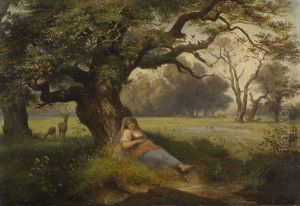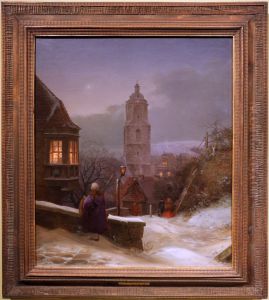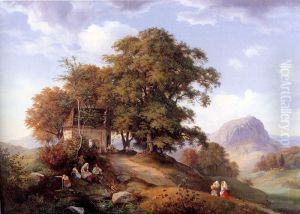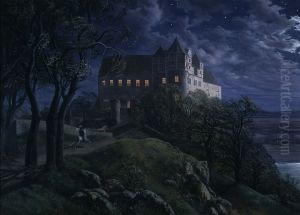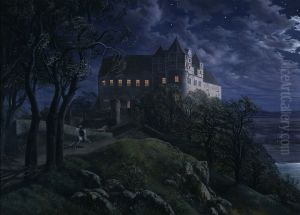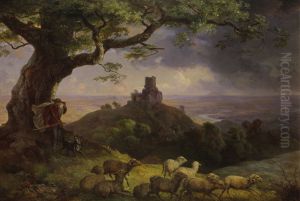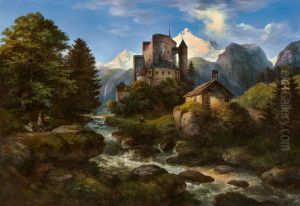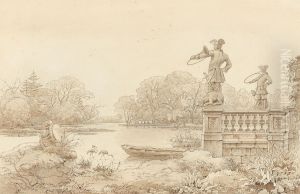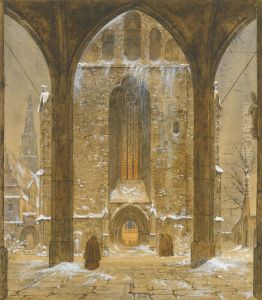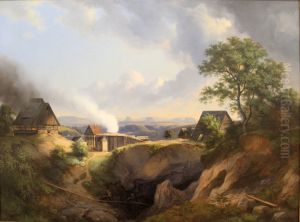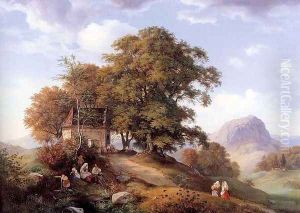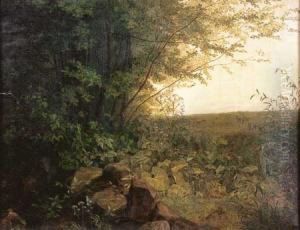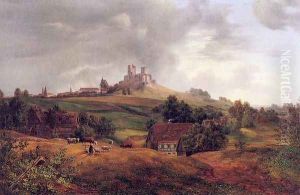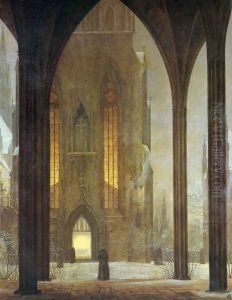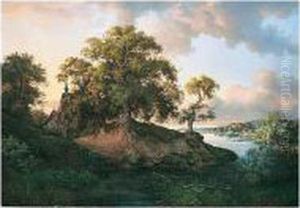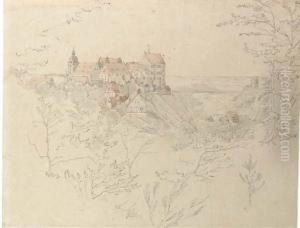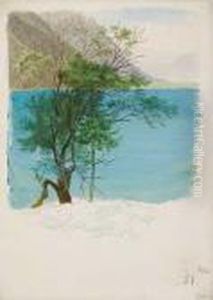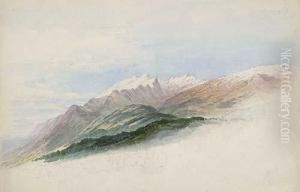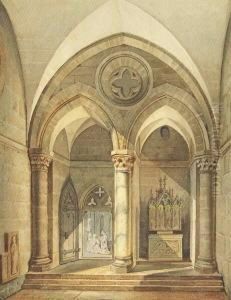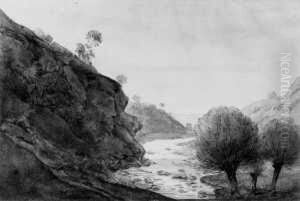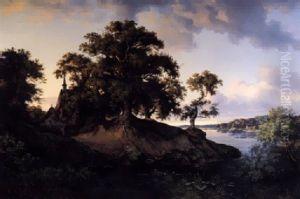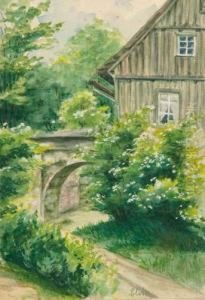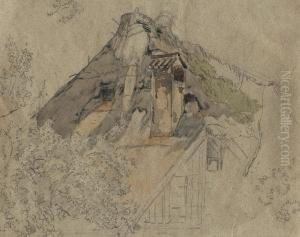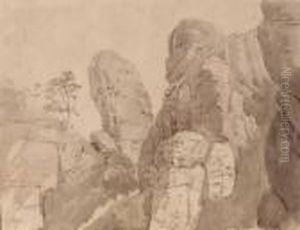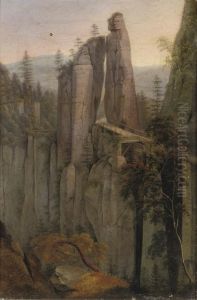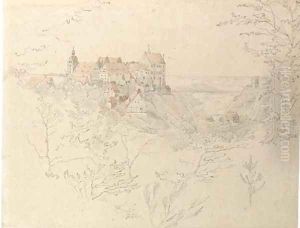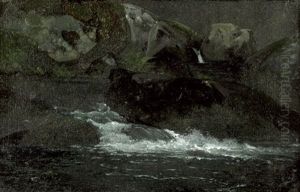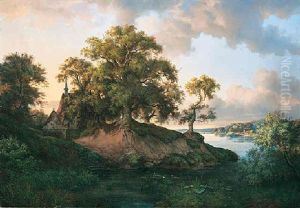Ernst Ferdinand Oehme Paintings
Ernst Ferdinand Oehme was a German Romantic landscape painter born in Dresden, April 23, 1797. Oehme's work is characterized by its intensive use of natural elements and dramatic, often moody, depiction of landscapes, which was a hallmark of the Romantic movement in art. His paintings frequently explored themes of nature's power and beauty, intertwined with a sense of mysticism and the sublime, reflecting the Romantic interest in the emotional and spiritual responses to the natural world.
Oehme was initially trained as an architect before he turned his focus to painting. His decision to pursue a career in art was influenced by his exposure to the works of Caspar David Friedrich, with whom he later studied. Friedrich's emphasis on the emotional content of landscapes and the symbolic use of elements within them had a profound impact on Oehme's artistic development. Under Friedrich's guidance, Oehme honed his skills and developed his unique style, which often incorporated architectural structures set within expansive and atmospheric landscapes.
Throughout his career, Oehme remained dedicated to landscape painting, though he never achieved the same level of fame as his mentor, Friedrich. Despite this, his works were appreciated for their deep emotional resonance and technical skill. Oehme's paintings often featured ruins, Gothic churches, and other medieval structures, enveloped in mist or bathed in the ethereal light of dawn or dusk, evoking a sense of nostalgia and longing for a bygone era.
Oehme's contributions to the Romantic movement were significant, though he is less well-known than some of his contemporaries. His works are preserved in various art collections and museums, primarily in Germany, where they continue to be studied and admired for their beauty and emotional depth. Ernst Ferdinand Oehme passed away on March 10, 1855, in Dresden, leaving behind a body of work that continues to inspire and captivate those who appreciate the Romantic vision of the natural world.
